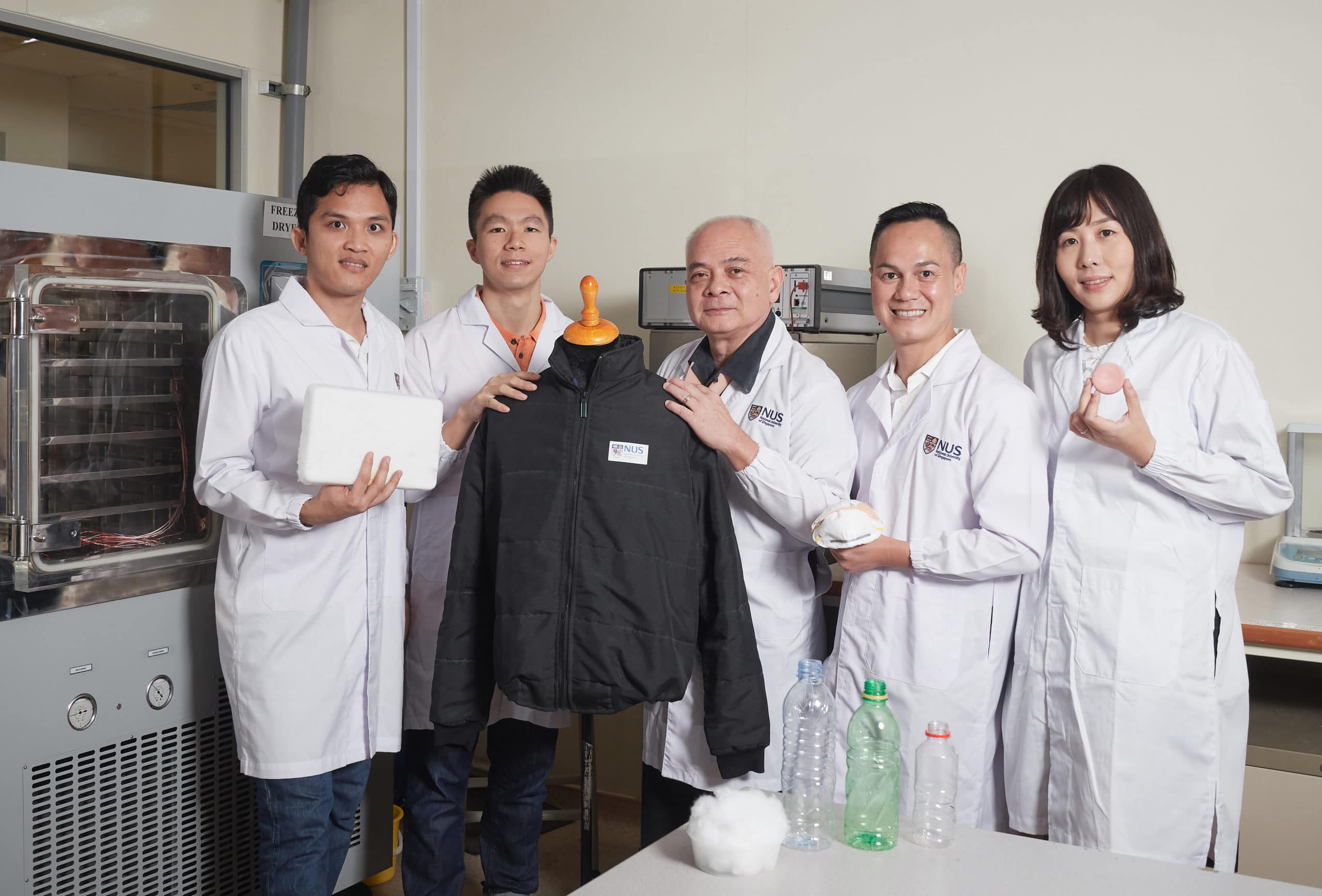
Researchers at the National University of Singapore developed a way to turn plastic bottle waste into an ultra-light material with diverse applications. [Photo: Courtesy of The National University of Singapore]
Hai Minh Duong (Second from Right), National University of Singapore
Commonly referred to as a “super-material,” aerogels are the lightest solid material known. Their strong and porous structure makes them useful for a wide range of tasks, including as excellent insulators. They are used for everything from cleaning up oil spills to keeping lunches cold.
Hai Minh Duong, associate professor of mechanical engineering at the National University of Singapore Faculty of Engineering, and his team developed a process of manufacturing aerogels out of PET—a form of polyester used to make most plastic containers. Duong says the process is faster and more cost effective while also utilizing environmental waste without toxic solvents. Unlike traditional silica aerogels, the PET aerogel can be recycled to make again without contributing chemicals or waste to the environment.
What is polyethylene terephthalate (PET)?
Polyethylene terephthalate (PET) is a form of polyester used to make most plastic bottles and containers.
How does the PET aerogel that has been developed by you and your team differ from the aerogels that are currently on the market?
They are ready to be scaled up for mass production. Production of the PET aerogels uses much less or even no toxic solvent and consumes less time and energy. The production rate is 18 times faster than previous methods, and the manufacturing cost of PET aerogel is also much lower than the current aerogel method.
Can you walk us through some of the practical uses for PET aerogels?
They can be used for personal care products, oil spill cleaning, toxic solvent absorption, medical devices, heat resistant and thermal insulation garments, heat and sound insulation in buildings, and to filter dust particles or CO2 gases in toxic gas masks. That’s just some of their current uses—they have potential for a lot more.
The heat insulation property of the PET aerogels can be applied to various consumer products like cooler bags to keep food items fresh. I also foresee tremendous potential for other high value applications, like pipeline insulation and transportation of liquefied natural gas, which needs to be stored at a low temperature.
The PET aerogels can also be used as a lightweight lining for firefighter coats and carbon dioxide absorption masks that could be used during fire rescue operations and fire escape. The masks can also be used in countries where air pollution and carbon emissions are of great concern.

PET Aerogel [Photo: Courtesy of The National University of Singapore]
What impact could this aerogel project and your continued research have on the future of the building industry?
Two-thirds of energy consumption in buildings is used for space conditioning and human comfort. To reduce energy use and harmful carbon emissions, the development of highly effective insulation materials that are stable under many different climate conditions to improve the energy efficiency of a building is highly demanded.
The ability to decrease building energy demand overall by using highly effective aerogel based insulation materials made from environmental waste is essential. The water repellent property of the aerogels allows them to be adaptable to both dry and rainy weather, and their structure remains stable for more than six months.
Being extremely strong, they can also increase building strength. These aerogels are also lightweight and slim, resulting in thinner walls, thus increasing building space.
How do you see this research continuing to develop? What’s next?
Currently, the PET aerogels are ready for several engineering applications like oil spill cleaning or heat and sound insulation. However, further research is required to optimize the fabrication conditions of PET aerogels and to attain middle scale production.

